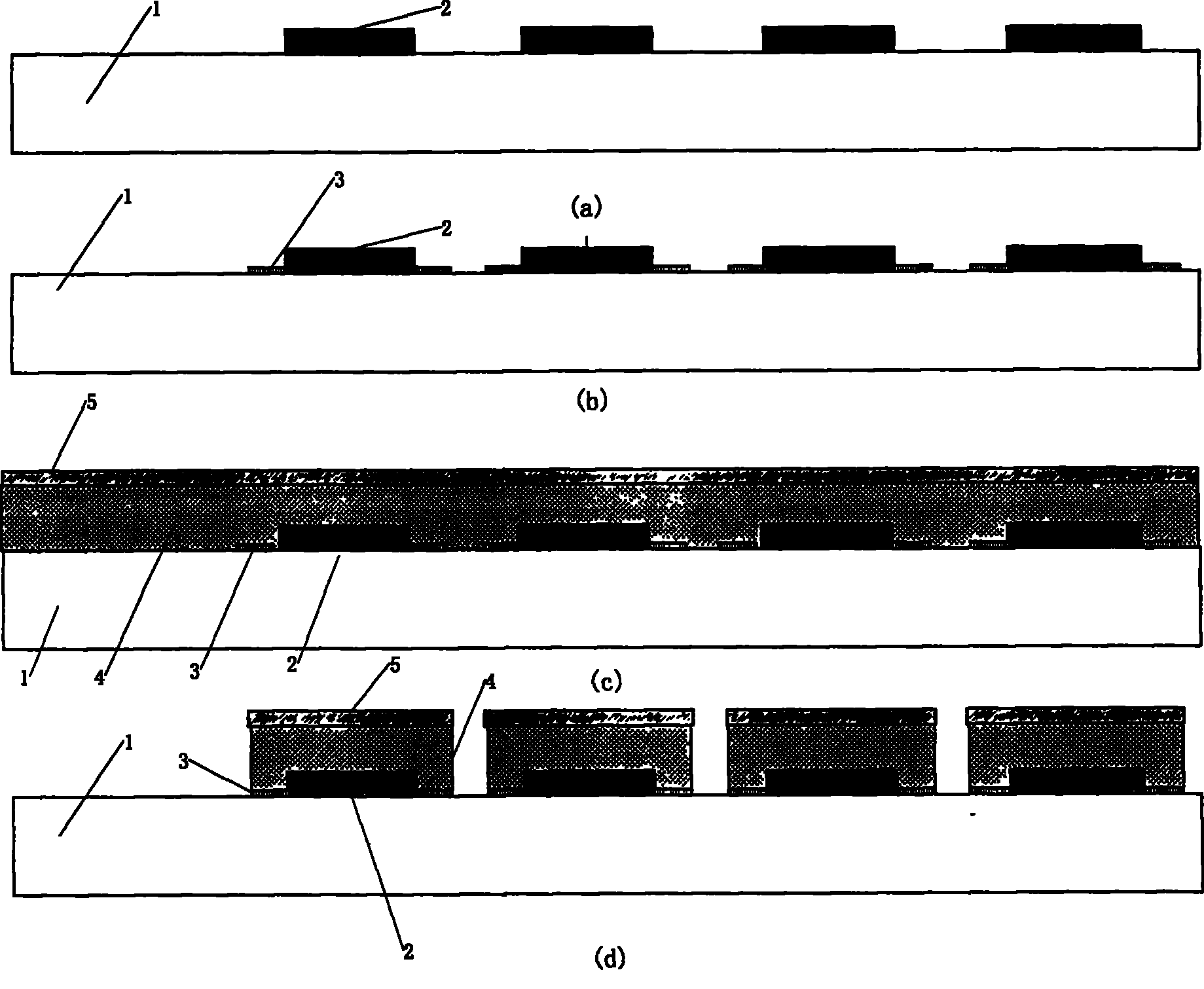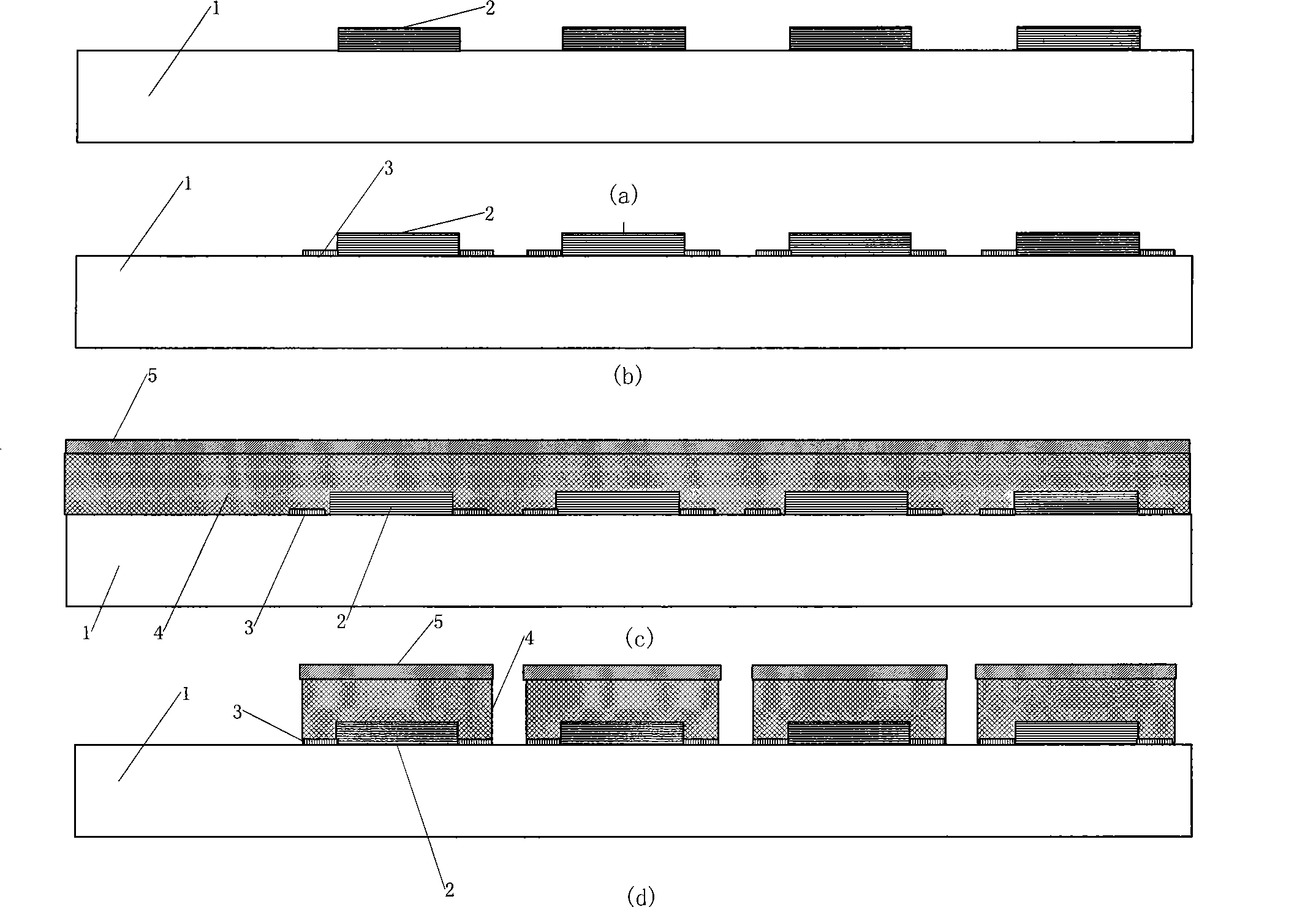Piezoresistive transducer probe based on electric conduction high molecule sensitivity membrane and preparation method thereof
A technology of sensor probes and conductive polymers, applied in the field of force sensors, can solve the problems of no practical application, no quantitative accuracy, resolution, etc., achieve a large range, avoid membrane cracking and warping, and reduce contact The effect of resistance
- Summary
- Abstract
- Description
- Claims
- Application Information
AI Technical Summary
Problems solved by technology
Method used
Image
Examples
Embodiment 1
[0047] a. Rinse the substrate printed with interdigitated electrodes successively in 95% methanol solution and deionized water to remove organic pollutants, and blow dry in dry air or nitrogen;
[0048] b. Spray the surface treatment agent SAD-5 special surface treatment agent for silicone rubber on both sides of the electrode area, and dry for 0.5 hours for later use;
[0049] c. Mix conductive carbon black powder with an average diameter of 0.02 μm, coupling agent vinyltriethoxysilane and liquid one-component room temperature vulcanized silicone rubber in n-hexane organic solvent; wherein, the mass ratio of each component is: Components RTV silicone rubber: conductive carbon black powder: coupling agent vinyltriethoxysilane: n-hexane organic solvent = 100:1:1:300;
[0050] d. Perform mechanical stirring under ultrasonic vibration, the temperature of the stirring environment is 30°C, and the stirring time is 2 hours to prepare a suspension of carbon black and room temperature...
Embodiment 2
[0057] a. Rinse the substrate printed with interdigitated electrodes successively in 95% methanol solution and deionized water to remove organic pollutants, and blow dry in dry air or nitrogen;
[0058] b. Spray the surface treatment agent on both sides of the electrode area and let it dry for 2 hours before use;
[0059] c. Mix conductive carbon black powder with an average diameter of 0.04 μm, coupling agent vinyltriethoxysilane and liquid one-component room temperature vulcanized silicone rubber in n-hexane organic solvent; wherein, the mass ratio of each component is: Components RTV silicone rubber: conductive carbon black powder: coupling agent vinyltriethoxysilane: n-hexane organic solvent = 100:5:2:400;
[0060] d. Perform mechanical stirring under ultrasonic vibration, the temperature of the stirring environment is 40°C, and the stirring time is 3 hours to prepare a suspension of carbon black and room temperature vulcanized silicone rubber, and ensure that the suspensi...
Embodiment 3
[0067] a. Rinse the substrate printed with interdigitated electrodes successively in 95% methanol solution and deionized water to remove organic pollutants, and blow dry in dry air or nitrogen;
[0068] b. Spray the surface treatment agent on both sides of the electrode area and let it dry for 1 hour for later use;
[0069] c. Mix conductive carbon black powder with an average diameter of 0.1 μm, coupling agent and liquid one-component room temperature vulcanized silicone rubber in n-hexane organic solvent; wherein, the mass ratio of each component is: one component room temperature vulcanized silicone rubber: Conductive carbon black powder: coupling agent vinyltriethoxysilane: n-hexane organic solvent = 100:15:2:500;
[0070] d. Perform mechanical stirring under ultrasonic vibration, the temperature of the stirring environment is 60 ° C, and the stirring time is 4 hours to prepare a suspension of carbon black and room temperature vulcanized silicone rubber, and ensure that th...
PUM
| Property | Measurement | Unit |
|---|---|---|
| diameter | aaaaa | aaaaa |
| diameter | aaaaa | aaaaa |
| thickness | aaaaa | aaaaa |
Abstract
Description
Claims
Application Information
 Login to View More
Login to View More - R&D
- Intellectual Property
- Life Sciences
- Materials
- Tech Scout
- Unparalleled Data Quality
- Higher Quality Content
- 60% Fewer Hallucinations
Browse by: Latest US Patents, China's latest patents, Technical Efficacy Thesaurus, Application Domain, Technology Topic, Popular Technical Reports.
© 2025 PatSnap. All rights reserved.Legal|Privacy policy|Modern Slavery Act Transparency Statement|Sitemap|About US| Contact US: help@patsnap.com


